Ripped jeans at the crotch are absolute trash since there’s no way to fix the problem and you can’t wear them one way or another.
When I was young, I didn’t understand how jeans could tear at the crotch because I had never had that happen before.
After getting married (to a sloppy guy, but I still love him) and regularly collecting my husband’s dirty jeans to wash, I now understand why.
Men destroy jeans when worn many times faster than women (you will somewhat admit that to me).
This is probably because the majority of men tend to wear jeans every day for very very long hours, even until bedtime.
Women, on the other hand, have dozens of alternative things to wear during the day and week. We don’t even want anything to repeat in our outfits for a week.
But that’s not all, though. Here are some more interesting reasons why your jeans rip at the crotch.
Let’s dive in!
Quick Navigation
Why do my jeans rip at the crotch?
If you ever wonder why your jeans often rip at the crotch very often and pretty quick, you possibly fall into some of the situations below.
Sitting for long hour every day

Cotton jeans are considered one of the most durable and high-performing natural materials. That is why they were popularly worn by factory workers in the 18th century.
The ripping of fabrics, especially 100% cotton jeans, is not a story that happens overnight. This is the result of the wearer’s wearing the crotch of the jeans excessively.
No surprise, friction is the main direct cause of jeans’ wear and tear. When the fibers of jeans become thin and less resistant, they easily tear with continued friction with different surfaces.
Modern life makes us sit more than we think. Sitting for more than 12 hours almost continuously in an office chair causes the bottom of your jeans to quickly rub and blow out without your awareness.
If your indigo blue jeans have completely faded at the crotch, high chances are they are about to rip soon.
So does sitting less at work help improve this? Not really, since you can sit and play games, watch movies or hang with friends at a cafe instead. The only way to change the situation is wearing jeans less.
This doesn’t mean you shouldn’t wear jeans all the time anymore. You should buy more jeans if these are your favorite daily-wear pants.
Having a lot of jeans means you will reduce the amount of time you wear one pair of jeans in a week or a month. This will probably prolong the jean’s lifespan due to less friction impact.
Sagging jeans
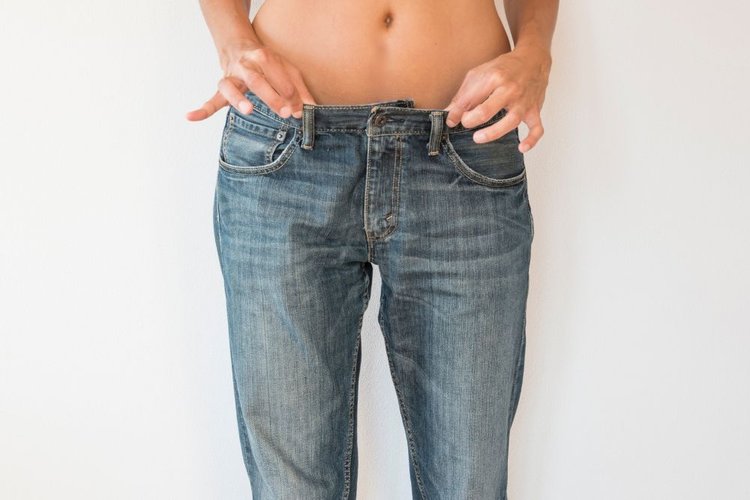
Sagging jeans have never been my cup of tea. But they were a pretty cool fashion trend about ten years ago, thanks to Justin Bieber.
The sagging jeans design incorporates an extra high rise, but the waistband won’t be on the wearer’s waist or hips as usual. It will sit below the butt, revealing the underwear underneath.
Therefore, if the waistband is not tightened enough with a belt, the chances are they will fall down to the ankles pretty quickly.
However, this sagging crotch design is very detrimental to the durability of the pants. Their crotch will tend to rub heavily.
When stacked in a sagging crotch design, this part not only rubs against the seating surface but also against itself, resulting in faster wear and rip.
So what can you do in this situation? Well, I have no idea. It’s a matter of the jeans’ design. So the only option is to get rid of these pants.
Thin and super stretchy jeans

Obviously, denim fabric that is thin and too stretchy will be more easily abraded when exposed to friction wherever the wearer is sitting.
This is due to the low cotton content in the jeans’ fabric structure. Instead, jeans contain more polyester, spandex, elastane, or lycra ingredients.
These man-made materials appear to be less wrinkled and more durable. But they cannot resist abrasion as well as natural cotton which is derived from cotton plants.
This will make the crotch wear faster, resulting in rips and tears not only in the crotch but all over the place. If you often have to ride a motorcycle or bicycle, these kinds of jeans are never your buddy.
With heavy-abused usage, they will quickly corrode on the fabric surface due to external friction around the crotch area.
Depending on what type of action you are usually involved in, thin and stretchy jeans work better for women or indoor jobs.
Low quality jeans fabrics
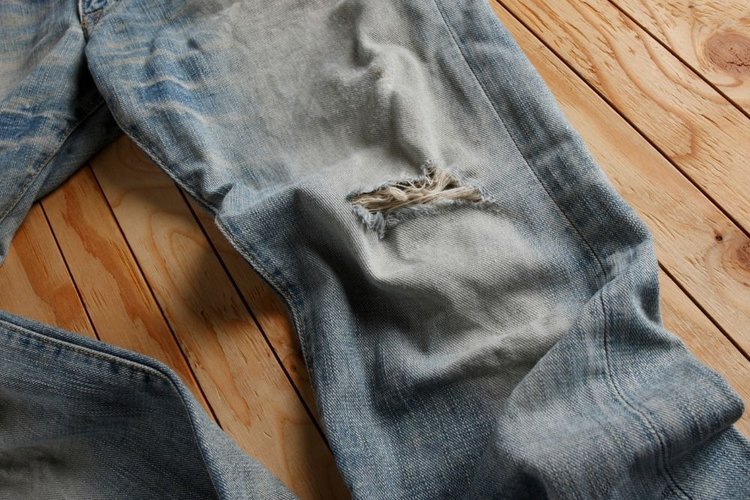
If you are someone who has been wearing jeans for a long time, you may have bought some poor quality jeans.
They are reworked from old discarded jeans, which we call recycled jeans. Their fabric construction contains up to 30-50% polyester, which makes the fabric less breathable and comfortable.
The wearer of these jeans will likely feel more sweat and moisture in the crotch and thighs.
This gets even worse if you work outdoors often. Perspiration containing salt and dust on the crotch will make the fabric in this area stiffer and more brittle.
Along with the stresses, traction, and friction during wear, some recycled jeans will tear suddenly instead of gradually wearing out and tearing as good quality jeans do.
Besides, recycled jeans are often treated with more chemicals than other types of jeans. This directly affects the health of the wearer negatively.
My advice is to always buy jeans from trusted brands. Don’t let saving a few bucks make you regret it later.
Cycling often

Cycling is sort of a good exercise to train the heart, lungs, and leg flexibility. However, wearing jeans while riding either dirt bikes or casual bikes for a few hours is not a good idea.
The intense friction from the saddle is accompanied by constant tension when moving the legs, which are real jean crotch crackers.
Even if you wear 100% cotton jeans with the appropriate thickness, the material will quickly wear down with frequent cycling. Besides, jeans are not the sort of pretty, breathable fabrics that are highly recommended for cyclists.
Stretchy jeans can be quite flexible with high stretch, but this material is less effective at absorbing sweat. You will probably find it more comfortable and more agile in a professional cycling suit than in cycling jeans.
It’s also a good way to prolong your jeans’ lifespan.
Poor construction
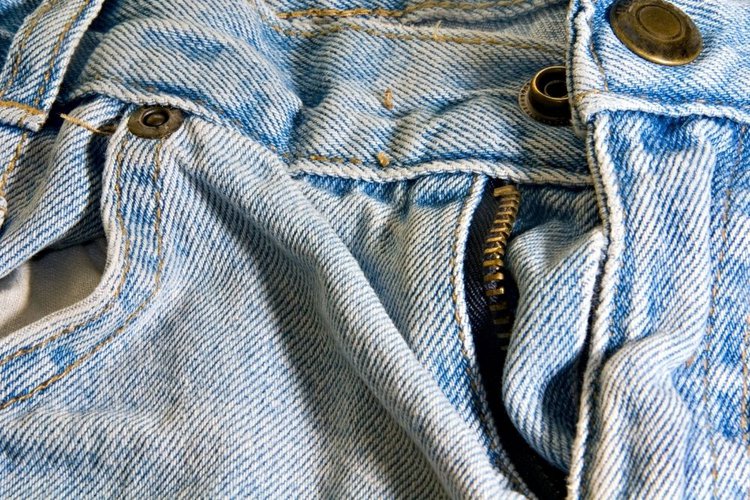
Poorly constructed jeans often come from recycled jeans or jeans that are too cheap for their value. The crotch seams of these jeans are stitched loosely and unevenly. This definitely causes the alignment of the pieces of fabric around the crotch area to decrease.
Loosening the crotch thread will also create ripped holes here. This may be because some jeans only incorporate a single stitch instead of double stitches when it comes to building the crotch seam.
It’s often difficult to notice these issues with the naked eye if you are not an expert in this field. Let’s check to see if the quality of the crotch seam is good or not when shopping for jeans.
You just need to use your hands to stretch both sides of the jeans horizontally. If the gaps between the stitches around the crotch seam appear pretty wide and pronounced and you can see them well, the chances are the jeans are pretty poorly constructed.
No raw washing

I used to not wash my brand new jeans right out of the bag before, since I do want to retain their good shape as if they were hanging in a fashion store.
But I later learned that this would cause the jeans to break and wear more quickly. This is because most jeans are not pre-washed before reaching you.
Sewing jeans in factories causes dirt, microfibers, and grime to get stuck between the stitches and the yarn.
If you don’t clean these before wearing them, the friction will cause the fabrics and threads to literally become weak, resulting in ripped or broken stitches.
Too tight fit jeans

Wearing small-size jeans is one of the top reasons why your jeans rip faster. In addition to the strong friction between your butt and the sitting surface, the crotch seam also has to endure the extra tension and traction that comes from having to fit your big butt.
If you notice tiny gaps between the threads in the crotch area when you’re wearing jeans, it means your jeans are too tight.
You could say that skinny jeans work the same way. But you might be surprised to learn that there is a positive correlation between skinny jeans (or slim-fit jeans) and faster worn-out and ripped crotches.
Ripped by metal objects
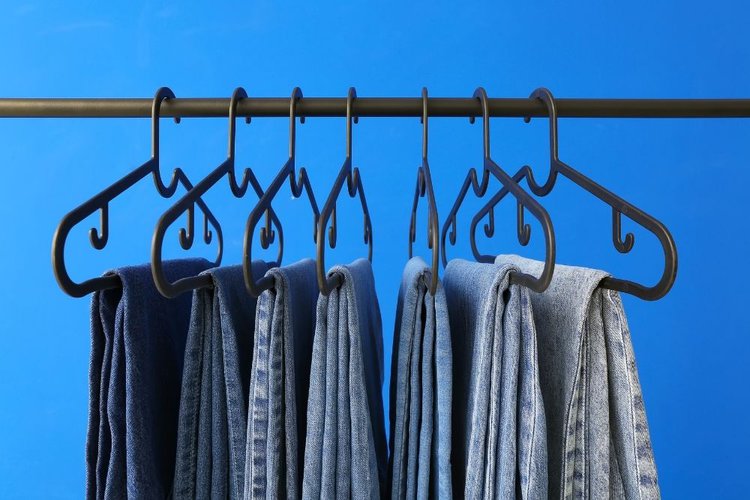
Aside from the subjective causes of ripping in the jeans’ crotch, this can also be the result of a collision with an unwanted metal object.
This can possibly happen when wearing jeans with iron hangers and you accidentally poke the sharp rounded tip of the hanger in the crotch, causing somewhere in this area to get punctured.
To be fair, the tip of the iron hanger isn’t so sharp that it’s capable of puncturing jeans with unintentional force. That could be because the crotch of your jeans has worn quite a bit and a light puncture can penetrate it.
Maybe it’s time to refresh your style with some new jeans.
Expose jeans regularly with high heat
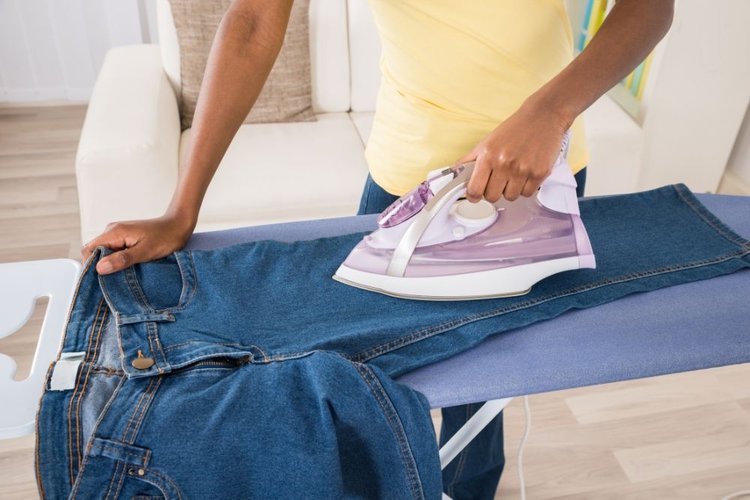
In some cases, washing the jeans with high heat or hot steam (about 60 degrees Celsius) can help remove bacteria and dirt while helping to soften the fabric.
But that doesn’t mean you should regularly wash your jeans in this mode.
Heat isn’t just about shrinking cotton jeans. They also make the fibers and the threads dry, brittle and more prone to breakage.
Things get worse if you also regularly iron your jeans at high temperatures to make the pants look flatter and prettier.
The temperature of the iron can reach 135 degrees Celsius in low mode. When cotton jeans are exposed to this temperature in a dry environment, the jean fabrics become brittle and stiffer.
This will result in a great decrease in the flexibility, durability, and abrasion resistance of cotton jeans when it comes to contact with concentrated friction while sitting.
No surprise, it will shorten the lifespan of the jeans’ crotch.
Unfortunately, if you set the heat too high, your jeans may shrink unnaturally (somewhere in between slightly burning and burning).
I highly recommend washing jeans by hand and using cold water on a daily basis. You better use high heat or hot steam on your jeans once or twice a month.
Some last words
I am not happy about hearing your jeans’ crotch broken quite a few times. If so, you probably fall into some of the situations above. We’ve got your back.Take great responsibility for your beloved pair of jeans before there’s nothing you can do to fix it.
Hi, I’m Grace Alision, a fashion lover with a passion for helping women feel confident and beautiful through their style choices. I created this website to share my love for wedding guest dresses and, in the future, to explore concert outfit inspiration. Dresses have always been my favorite way to express elegance and individuality, and I’m here to make finding the perfect outfit fun and easy. When I’m not working on outfit ideas, I love discovering new trends and connecting with others who share my love for fashion.

